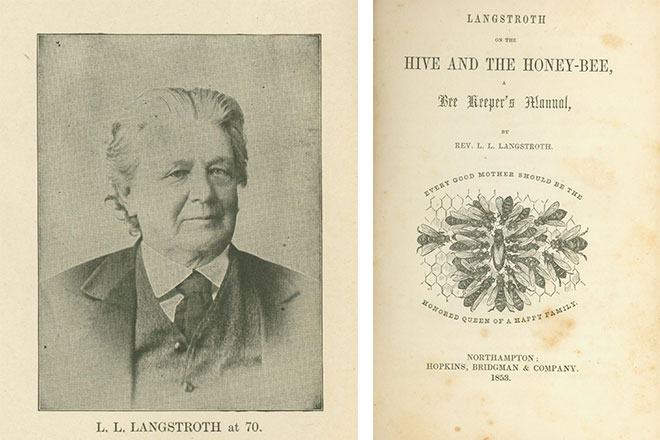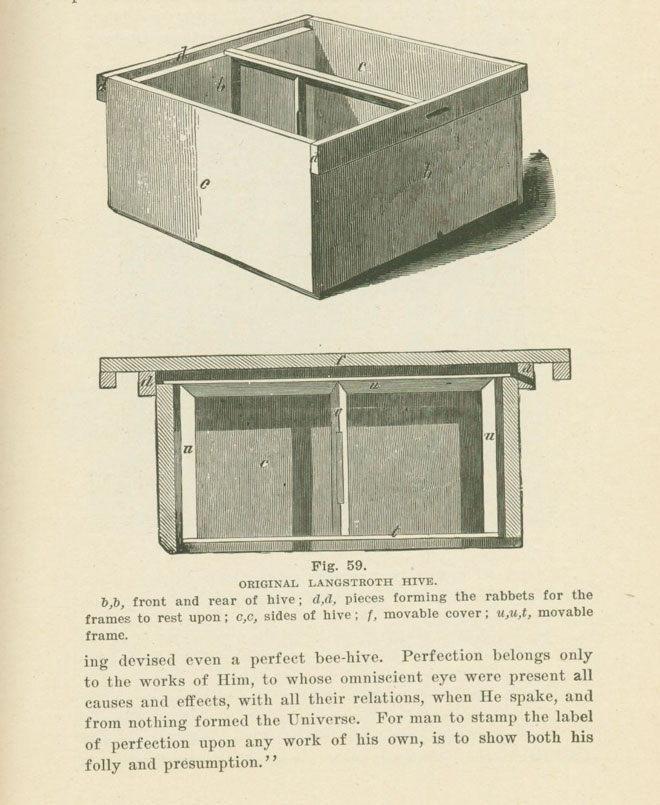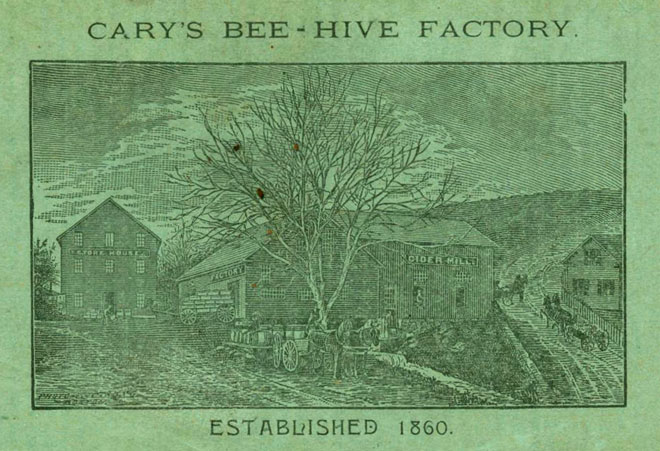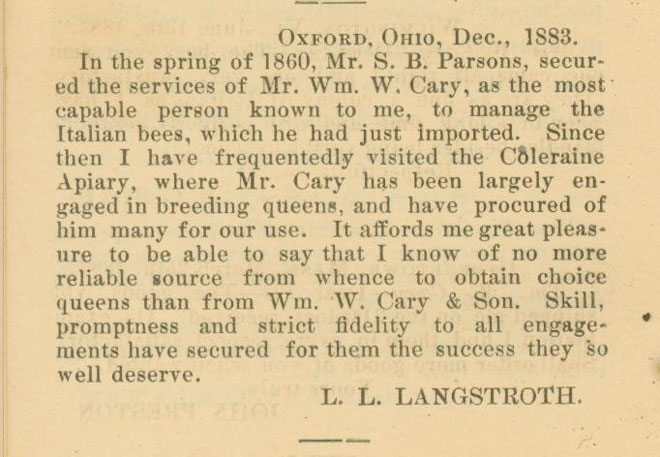Lorenzo Langstroth (1810-1895) was a man plagued by depression for all of his adult life. At times, his struggles with the disease affected his ability to perform his duties as pastor of his church, or teach at a school. What gave him relief and helped him cope was an extension of his childhood love of insects. He took up beekeeping. This hobby would grow and eventually lead Langstroth to fame as the “Father of American Beekeeping” for his invention of the movable-frame hive, the discovery of bee space, and the writing of his The Hive and the Honey-bee in 1853. While his fame is well known among bee enthusiasts, most lay people are not aware of his strong ties to western Massachusetts, particularly Greenfield.

Langstroth was born in Philadelphia in 1810. He studied theology at Yale, and graduated in 1831. In 1836, he became pastor of the Congregational Church in Andover, Massachusetts. He left this post a couple of years later due to his ongoing depression. He then moved to Greenfield where he served as a teacher at the Female High School from 1839 to 1843. On December 20, 1843, he was installed as the sixth pastor of the Second Congregational Church of Greenfield. He would serve in that position until 1848, when he returned to Philadelphia. In 1852, he returned to Greenfield, this time complaining of “head troubles” where he wrote the majority of his book. The first edition was published in nearby Northampton. He lived in Greenfield for six years with his sister, before moving his family to Oxford, Ohio. In 1874, he retired from beekeeping, but continued the occasional preaching, as his illness would allow. He died in 1895 while giving a sermon in Ohio.

A contemporary of Langstroth, William W. Cary (1815-1884) was a trained wood-worker who had an affinity for bees. He founded an apiary in the Foundry Village area of Colrain, Massachusetts. His success with beekeeping led to him creating a business of selling bees and supplies to other enthusiasts. His son, William Jr., (known by his middle name Whiting), joined him in his business and eventually took over and expanded it. Whiting added an orchard and cider mill, where the bees kept the apple blossoms pollinated, ensuring that apples would grow, while the apple trees ensured enough pollen for the bees.
While Cary never became the well-known name that Langstroth did, Cary was successful in making beekeeping a profitable business. Through the sale of merchandise from his catalogs, both William and Whiting were pretty well off. In the History of Colrain Massachusetts by Lois McClellan Patrie, one of the Carys purchased a pew in the new Baptist meetinghouse for $70, the second highest amount paid. Most other pews went for less than $5. Clearly, the Carys could afford to spend money on good seats.

Langstroth and Cary seem quite different at first glance; Langstroth a Congregationalist from Philadelphia with a health problem who takes up beekeeping for its soothing effects, and Cary, a Baptist capitalist from Colrain who turns beekeeping into a profitable enterprise. Yet they were brought together by their shared hobby. Langstroth visited Cary’s apiary and Patrie claims that he tested his new hive there. Both men are said to have been among the first to import Italian queens into their hives, and both experimented not only with hives, but with breeding as well. It seems likely the two men formed a mutually beneficial friendship based on the love of the honeybee.

Recently the Historic Deerfield Library purchased a collection of books about beekeeping. Among these are several copies of Langstroth’s book, in the many different editions it went through. The 31stannual catalog from Whiting Cary’s business is also included. The rest of the collection contains works on the many different beehive designs inspired by and based on Langstroth’s design; as well as various other catalogs of bee equipment from Cary’s competitors.